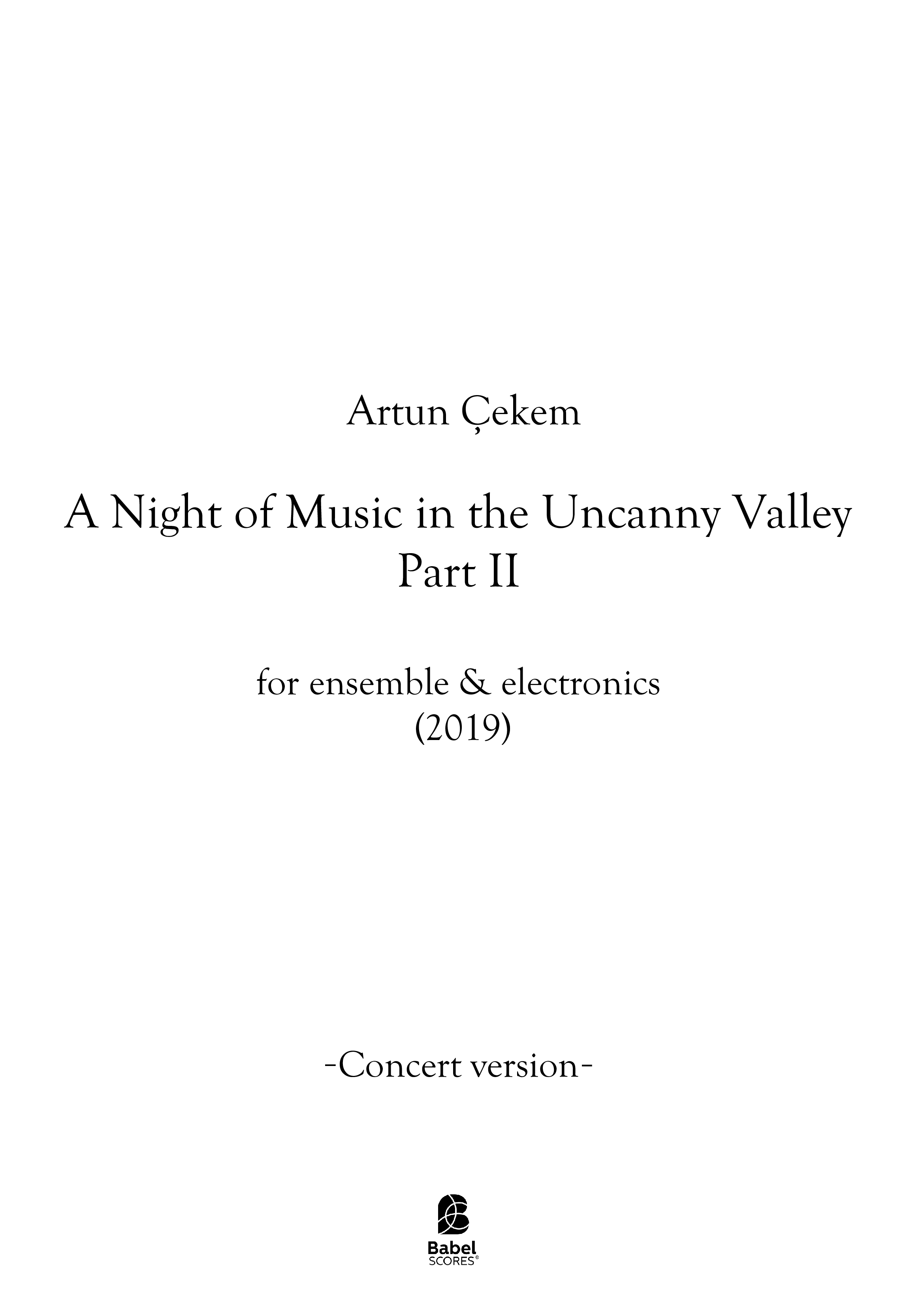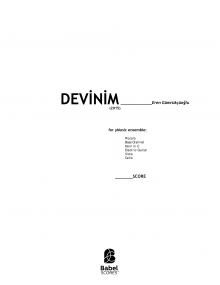Recherche avancée
A Night of Music in the Uncanny Valley, Part II
ISMN : 979-0-2325-4473-1
- Identifiez-vous pour créer une liste
“And – here is a thought not too pleasing – as the external world becomes more animate, we may find that we – the so-called humans – are becoming, and may to a great extent always have been, inanimate in the sense that we are led, directed by built-in tropisms, rather than leading. So we and our elaborately evolving computers may meet each other halfway. Someday a human being, named perhaps Fred White, may shoot a robot named Pete Something-or-Other, which has come out of a General Electric factory, and to his surprise see it weep and bleed. And the dying robot may shoot back and, to its surprise, see a wisp of gray smoke arise from the electric pump that it supposed was Mr. White’s beating heart. It would be rather a great moment of truth for both of them.” -Philip K. Dick
A Night of Music in the Uncanny Valley (for ensemble, narrator and electronics) is a cycle consisting of five ensemble pieces in total. The music, fiction, stage elements, and the text I created for this piece are based on a cognitive phenomenon named as the uncanny valley, a term popularly put forward by the roboticist Masahiro Mori. This concept aims to explain the emotional responses which we give to objects in proportion to those objects’ resemblance to a human being. According to the hypothesis, the more an object’s resemblance to a human being increases, the more we tend to show positive affinity towards it, until there arrives a point where the object becomes almost human, but not quite. At this stage the positive response suddenly tends to drop down to a remarkably negative level, as this object’s extreme resemblance to a human person causes an unsettling cognitive dissonance. This discomforting zone of transition from non-human to human is named the uncanny valley.
In A Night of Music in the Uncanny Valley, the uncanny valley is treated as a fictional setting as if it were an actual existing place. The work is written as the representation of a ritualistic ceremony held by the inhabitants of the Uncanny Valley, beings who are trapped on the thin line between human and non-human. Every part of the overall piece depicts a different stage of the complete ritual in five parts.
All five parts of the piece contain a common musical material: methodically selected data derived from the spectral analyses of the Narrator’s voice, which is actually a tape recording played from a loudspeaker situated at the center of the stage. By gradually implementing elements such as vowel formants, partials, phonemes, speech melody, consonant noise, and inflections, I aimed to achieve a pseudo-organic speech-like quality in my music. I juxtaposed organized musical sections with phonorealistic instrumental speech sections, intending the final result to sound almost human, but not quite. Therefore, the constant shifting among the human and non-human would form the gestalt of a human-machine and consequently create an uncanny setting by obscuring the line in between.
Gregory Charette - Conductor
René van Munster - Cello
Daniel Boeke - Bass Clarinet
Susanne Peters - Alto Flute & Piccolo
Jellantsje de Vries - Violin
Christian Smith - Percussion
Sophie Patey - Piano
October 2019
Pages - 48






